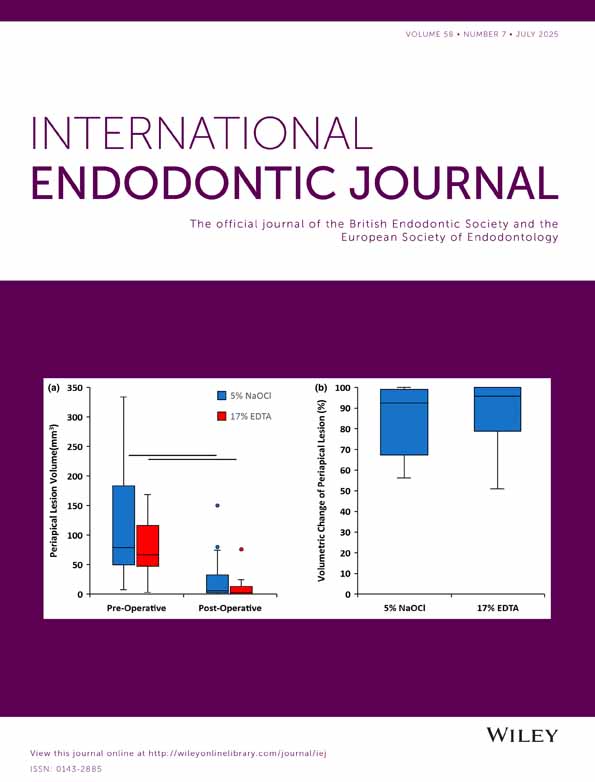Same-day emergencies in endodontic specialists' practice: Before, during and after the COVID-19 pandemic
Abstract
Aim
The COVID-19 pandemic affected practice in endodontic offices. Same-day endodontic emergencies are cases with moderate or severe self-reported pain who request an unscheduled visit on the day they contact the office. The aims of this observational study were to: (A) analyse the rate of same-day endodontic emergencies in two endodontists' private offices, with respect to their demographic, aetiologic, diagnostic and procedural data; and (B) investigate the changes in characteristics of same-day emergencies between March 16 and May 31 annually over five years: 2019–2023.
Methodology
Records of 5795 patients were reviewed and 892 same-day emergencies were identified. Overall and year-to-year comparisons of proportions of same-day emergencies, as well as demographic, aetiologic, diagnostic and procedural data were performed using chi-square test of independence followed by adjustments for multiple testing using the Benjamini-Hochberg method.
Results
The rate of same-day endodontic emergencies significantly increased during the initial outbreak of COVID-19 in 2020 and remained high in 2021 (p < .05; Q < .05). The rate of same-day emergencies in 2022 subsided to levels comparable to 2019 (p > .05). Year-to-year comparisons of aetiologic factors (caries, restorative, persistent infection and cracks) showed a significant increase only in the rate of cracks in 2020, 2021and 2022 compared with 2019 (p < .05), but this increase did not reach the significance level after adjusting for multiple comparisons throughout the 5 years (Q > .05).
Conclusions
The COVID-19 pandemic was associated with a significant increase in the rate of same-day endodontic emergencies for 2 years. The spike in endodontic emergencies associated with the COVID-19 pandemic lasted well beyond the initial period of the outbreak. Further national and international studies are recommended to better understand the long-term impacts of pandemics of respiratory diseases on the public's oral health.
CONFLICT OF INTEREST STATEMENT
The authors confirm they have no conflict of interest.
Open Research
DATA AVAILABILITY STATEMENT
The data that support the findings of this study are available on request from the corresponding author. The data are not publicly available due to privacy or ethical restrictions.




